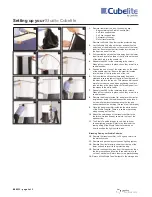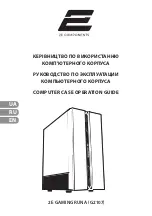
SYMPTOMS OF CARBON MONOXIDE POISONING
Carbon monoxide bonds to the hemoglobin in the blood and reduces the
amount of oxygen being circulated in the body. The following symptoms are
examples taken from NFPA 72 and 720. They represent approximate values
for healthy adults:
Concentration (ppm CO)
Symptoms
200
Mild headache
after 2-3 hours of exposure
400
Headache and nausea
after 1-2 hours of exposure
800
Headache, nausea, and dizziness
after 45 minutes of exposure;
collapse and unconsciousness
after 2 hours of exposure
Many causes of reported carbon monoxide poisoning indicate that while vic-
tims are aware that they are not well, they become so disoriented that they
are unable to save themselves by either exiting the building or calling for
assistance.
Also young children and pets may be the first to be affected.
Per UL standard 2075, FIK-CO351 has been tested to the sensitivity limits de-
fined in UL standard 2034.
ALARM THRESHOLDS ARE AS FOLLOWS:
Parts Per Million
Detector response time, min.
70 ±5ppm
60-240
150 ±5ppm
10-50
400 ±10ppm
4-15
What to do if the carbon monoxide detector goes into alarm:
Immediately move to a spot where fresh air is available, preferably
outdoors.
IMPORTANT: This detector should be tested and maintained regularly
following National Fire Protection Association (NFPA) 72 and 720 require-
ments.
CO SENSOR LIFETIME
The CO cell has an expected lifetime of approximately ten years. The detector
is programmed to signal the approach of end of this lifetime to the control
panel. The CO cell is not a field replaceable component. The CO detector will
not operate once the CO cell has reached its end of life.
3
I56-6636-000
1/15/2021






















